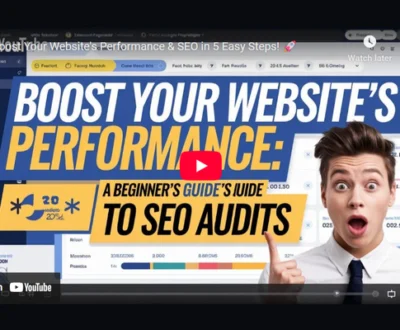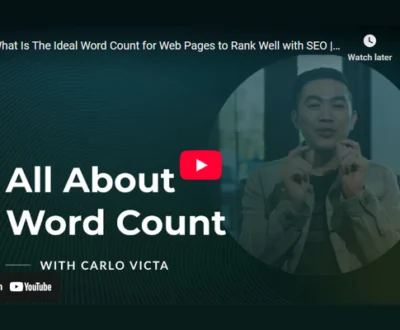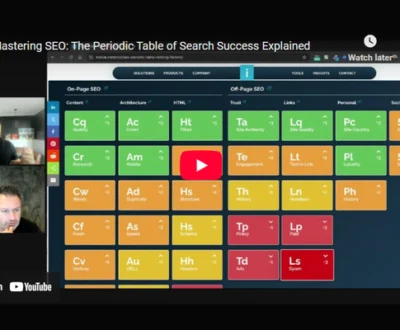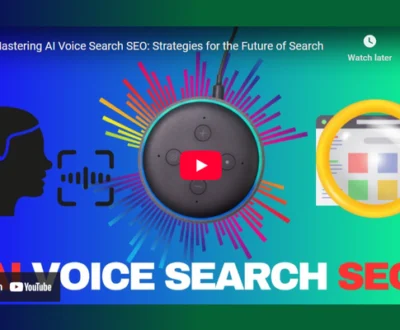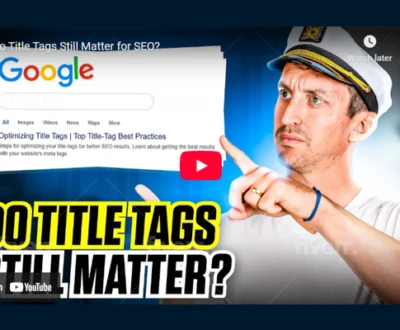I see that HTML5 improves on-page SEO by using semantic tags like <header> and <footer> to clarify content structure, which helps search engines understand your pages better. It streamlines code, allowing faster crawling and indexing, while supporting mobile optimization through responsive design. Native multimedia features load content quickly and boost engagement, and built-in accessibility enhances user experience. These factors collectively strengthen your site’s SEO performance. By incorporating these features into your site’s framework, you create a solid technical foundation that complements your content strategy. Understanding these improvements reveals why HTML5 is essential for modern SEO efforts.
- Key Takeaways
- Enhancing Content Clarity With Semantic Structure
- Streamlining Code for Faster Crawling and Indexing
- Mobile Optimization Strategies Enabled by HTML5
- Native Multimedia Support and Its SEO Benefits
- Accessibility Features That Boost User Engagement
- Frequently Asked Questions
- Final Thoughts
Key Takeaways
- Semantic HTML5 tags organize content hierarchy, improving search engines’ understanding and keyword relevance for better indexing.
- Cleaner, streamlined code with HTML5 enables faster crawling and indexing by reducing redundancy and enhancing load speeds.
- Mobile optimization features in HTML5 ensure responsive design, improving user experience and search rankings on all devices.
- Native multimedia support in HTML5 allows direct crawling of video and audio, boosting content coverage and user engagement.
- Enhanced accessibility through semantic elements and improved controls increases usability and positively impacts SEO performance.
Enhancing Content Clarity With Semantic Structure
Although many web designers focus primarily on visual appeal, I’ve found that using semantic HTML5 tags greatly enhances content clarity for both users and search engines.
Semantic tags like <article>, <section>, and <nav> help define a clear content hierarchy, making it easier to understand the structure and purpose of each part of a webpage. This clarity reduces ambiguity by explicitly indicating semantic relationships between text sections, headers, and navigation elements.
When crawlers recognize these roles, they can prioritize important content such as main articles and headers, improving keyword relevance and indexability. In addition, organizing content in this way allows search engines to map page sections more accurately to user queries, which supports better SEO outcomes. For example, a properly structured <main> section can help a search engine identify the central theme of the page, while <aside> elements can be associated with supplementary information. Semantic HTML also plays a critical role in enhancing accessibility by aiding assistive technologies in interpreting webpage content effectively.
Using semantic structure not only benefits machine readability but also improves user experience by creating logical, accessible content layouts. This approach ultimately strengthens your site’s visibility and effectiveness in search results.
Streamlining Code for Faster Crawling and Indexing
Building on the benefits of semantic HTML5 tags for content clarity, streamlining your code plays an equally important role in improving your site’s SEO performance. By focusing on code efficiency and reduced redundancy, HTML5 simplifies markup, which decreases the amount of code search engines must crawl. This leads to faster parsing and indexing, allowing search engines to prioritize your actual content. HTML5 introduces new elements like <header>, <footer>, <article>, and <section> that enhance the semantic meaning of content, making it easier for search engines to understand and categorize your pages.
Here’s how streamlined HTML5 code supports SEO:
| Benefit | Explanation |
|---|---|
| Code Efficiency | Less code means quicker processing |
| Reduced Redundancy | Eliminates unnecessary elements |
| Faster Crawling | Search engines can index pages more rapidly |
| Improved Indexation | Semantic tags aid content understanding |
In practice, removing unnecessary <div> wrappers, consolidating inline styles into CSS, and eliminating deprecated tags can significantly reduce HTML size without affecting design. Cleaner code also improves loading speeds, further enhancing SEO by delivering better user experience. Overall, reducing code overload helps search engines access and analyze your content more effectively, boosting your site’s visibility and search rankings.
Mobile Optimization Strategies Enabled by HTML5
When optimizing for mobile devices, HTML5 offers a range of strategies that improve both usability and performance.
Adopting a mobile-first design guarantees that the core content loads efficiently on smaller screens, then progressively enhances for larger devices. CSS media queries and fluid grids adjust layouts dynamically, maintaining proportions across smartphones and tablets.
The viewport meta tag controls scaling, preventing awkward zooms. Touch interaction plays a crucial role too; HTML5 supports enlarged touch targets and gesture recognition, reducing accidental taps and enhancing navigation with swipe actions.
Removing hover states avoids conflicts on touchscreens, while feedback animations confirm user input smoothly. Additionally, responsive image syntax delivers appropriate graphics based on screen density, speeding up load times.
Another often-overlooked feature is HTML5’s support for <picture> elements, which allow the browser to choose the most appropriate image source, further improving speed and visual quality. Standardized form inputs automatically trigger mobile keyboards, improving input ease.
Together, these HTML5 features guarantee your site is accessible, fast, and user-friendly on any device, which positively impacts SEO by keeping visitors engaged and reducing bounce rates.
Native Multimedia Support and Its SEO Benefits
As mobile optimization strategies rely on smooth and responsive content delivery, incorporating multimedia elements directly into your site can further enhance user experience and SEO performance.
HTML5 provides native support for video embedding and audio integration, allowing you to add rich media without relying on third-party plugins. This not only speeds up page loading times but also helps search engines index your multimedia content more effectively.
When search engines can crawl video and audio files directly, your site gains better content coverage, improving visibility in search results. Additionally, using HTML5’s semantic elements around multimedia content offers clearer context, helping search engines understand and categorize your pages accurately.
Captions, transcripts, and descriptive <track> elements further improve accessibility and keyword relevance for multimedia content. This cleaner code structure reduces errors that might hinder crawling, ensuring efficient indexing. By embedding video and audio natively, you create a more interactive and engaging experience for visitors, which can boost user interaction metrics and ultimately contribute to stronger SEO outcomes.
Accessibility Features That Boost User Engagement
Although many website owners focus primarily on visual design and content, accessibility features greatly influence user engagement and overall site performance. Following accessibility guidelines helps create semantic HTML5 elements, improved form controls, and responsive designs that accommodate all users. Incorporating user feedback guarantees these features work well in practice, boosting satisfaction and session duration.
Here’s a quick overview of accessibility features that enhance engagement:
| Feature | Benefit | SEO Impact |
|---|---|---|
| Semantic Elements | Clear structure, easy navigation | Better indexing |
| Improved Form Controls | Easier data entry, screen reader support | Reduced bounce rates |
| Responsive Design | Works on all devices | Higher mobile rankings |
| Interactive Elements | Accessible buttons, keyboard use | Longer user sessions |
| SEO & Accessibility | Combines usability and search optimization | Higher search rankings |
Simple adjustments like ARIA labels, keyboard navigation support, and high-contrast modes can make a site far more usable for visitors with disabilities. Using these features not only meets accessibility guidelines but also creates a smoother, more inclusive user experience that positively affects SEO.
Frequently Asked Questions
How Does HTML5 Affect Website Security Beyond SEO?
I see HTML5 security brings both advances and risks. HTML5 vulnerabilities like XSS, CSRF, and data leaks demand strict CSP headers and sanitization to keep sites safe beyond SEO advantages. Always stay vigilant!
Can HTML5 Improve Local SEO Performance Specifically?
I believe HTML5 can boost local SEO by enhancing mobile optimization and structuring local citations clearly. These improvements help search engines understand your site better, increasing visibility in local search results and attracting nearby customers effectively.
What Impact Does HTML5 Have on Voice Search Optimization?
Imagine voice search as a helpful librarian; with HTML5’s semantic markup, I give clear directions, so it quickly finds answers. This clarity boosts my site’s chances of being the voice search’s go-to resource every time.
Does HTML5 Support Better Integration With Social Media Platforms?
Yes, I find HTML5 supports social sharing well by enabling dynamic embeds and metadata optimization, which helps content display accurately across platforms. This smooth integration enhances user interaction and boosts visibility on social media networks.
How Does HTML5 Influence Website Analytics and Tracking Accuracy?
I’ve found HTML5’s analytics enhancements boost tracking precision by using semantic elements and custom data attributes, enabling detailed event timing and cross-environment consistency. This means you get clearer, more accurate insights about user interactions on your site.
Final Thoughts
HTML5 greatly enhances on-page SEO by improving semantic clarity, speeding up indexing, and supporting mobile optimization. Curiously, 61% of marketers say improving SEO and growing their organic presence is their top inbound marketing priority, highlighting HTML5’s value. By using native multimedia and accessibility features, you not only meet technical standards but also engage a wider audience. When these elements are implemented strategically, they create a synergistic effect that strengthens rankings, improves engagement, and ensures long-term search visibility. Embracing these HTML5 benefits helps your site perform better in search results, making your content easier for both users and crawlers to understand.
Windee Tan is a seasoned SEO Specialist with over a decade of experience helping businesses grow their organic visibility through data-driven strategies. He specializes in technical SEO, content optimization, and local search, with deep knowledge of tools like GA4, GSC, SEMrush, and Screaming Frog. Windee is passionate about translating complex SEO insights into practical tactics that drive real-world results. When he's not auditing sites or crafting keyword strategies, he’s exploring the latest trends in AI, digital marketing, and productivity.
About this blog
We are a digital marketing company with a focus on helping our customers achieve great results across several key areas.
Request a free quote
We offer professional SEO services that help websites increase their organic search score drastically in order to compete for the highest rankings even when it comes to highly competitive keywords.
Subscribe to our newsletter!
More from our blog
See all postsRecent Posts
- Writing Clear Calls to Action That Boost On-Page SEO 21 August 2025
- Why Word Count Still Matters in On-Page SEO Today 20 August 2025
- Why Site Speed Is Critical for On-Page SEO Success 19 August 2025


